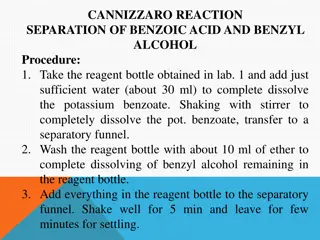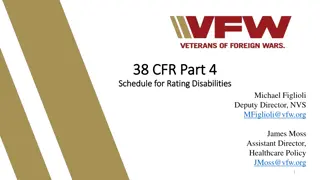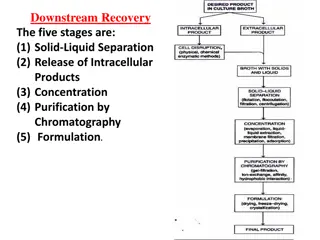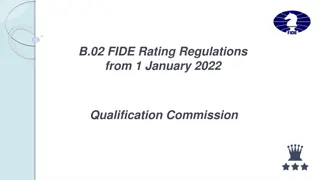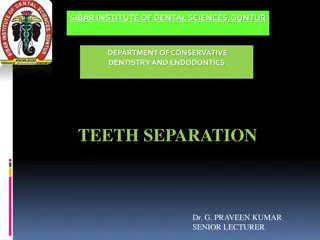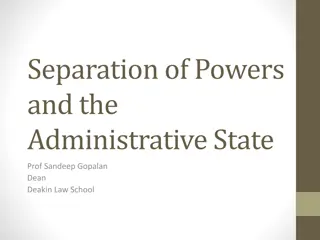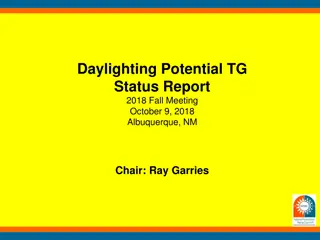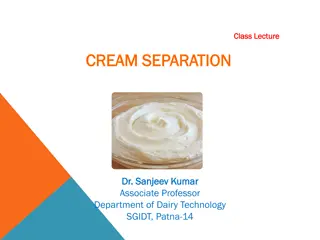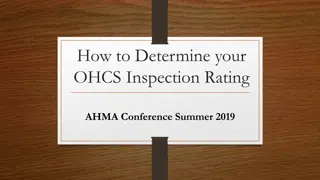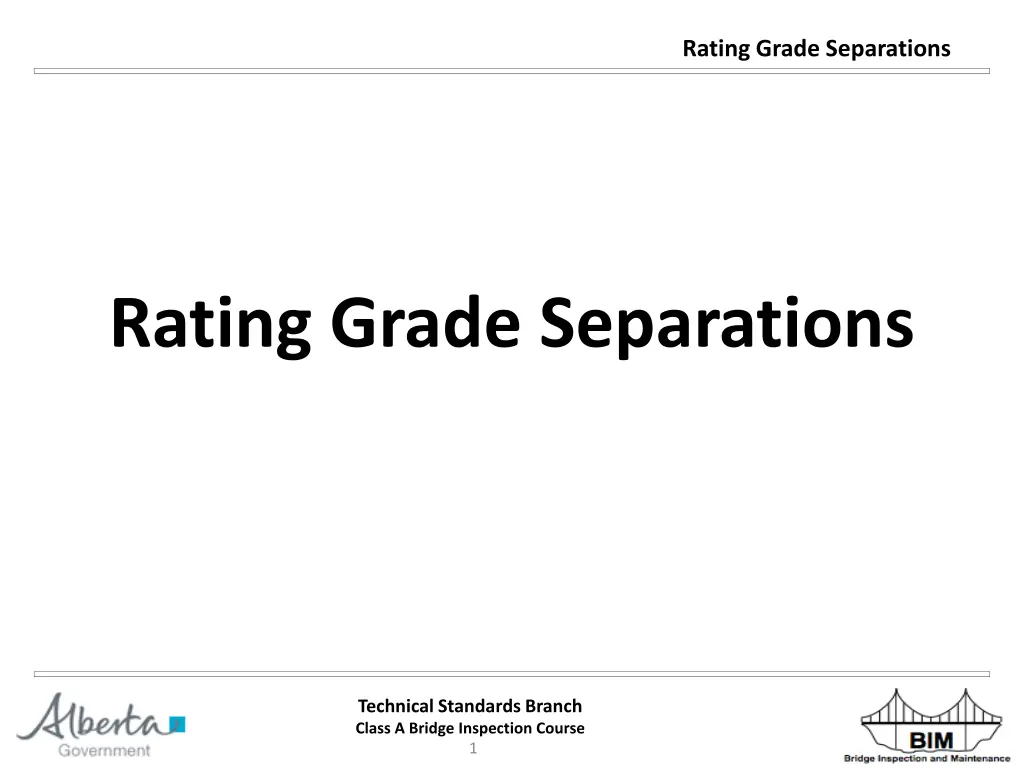
Technical Standards for Grade Separations and Bridge Inspection Courses
Explore the technical standards and guidelines for grade separations, bridge inspection courses, road alignment evaluations, and traffic safety features. Learn about different structure usages and inspection considerations to ensure safety and compliance in transportation infrastructures.
Download Presentation

Please find below an Image/Link to download the presentation.
The content on the website is provided AS IS for your information and personal use only. It may not be sold, licensed, or shared on other websites without obtaining consent from the author. If you encounter any issues during the download, it is possible that the publisher has removed the file from their server.
You are allowed to download the files provided on this website for personal or commercial use, subject to the condition that they are used lawfully. All files are the property of their respective owners.
The content on the website is provided AS IS for your information and personal use only. It may not be sold, licensed, or shared on other websites without obtaining consent from the author.
E N D
Presentation Transcript
Rating Grade Separations Rating Grade Separations Technical Standards Branch Class A Bridge Inspection Course 1
Rating Grade Separations Grade Separation The grade separation section applies to structures which have the following Structure Usage as classified in the BIS inventory: GS - vehicular grade separation PS - pedestrian grade separation RO - railway overpass RU - railway underpass SP - stockpass or cattlepass Technical Standards Branch Class A Bridge Inspection Course 2
Rating Grade Separations Technical Standards Branch Class A Bridge Inspection Course 3
Rating Grade Separations Technical Standards Branch Class A Bridge Inspection Course 4
Rating Grade Separations Grade Separation The grade separation section of the BIM inspection form replaces the channel section for structures that are not over streams. The grade separation section is different for bridges and culverts as shown: Technical Standards Branch Class A Bridge Inspection Course 5
Rating Grade Separations Grade Separation Technical Standards Branch Class A Bridge Inspection Course 6
Rating Grade Separations Road Alignment This element refers to road vert.& horiz. alignment below or through the bridge or culvert and condition of the road surface surface. The limits of evaluation are 1 km in each direction Inspection and rating considerations include: vertical and horizontal alignment that may contribute to damage to the bridge look for indications for reduced vertical clearance railway alignments should be rated X alignments that can be safely driven and do not contribute to collision with the structure should be rated 5 or higher bridge structures include condition of road, cracks, heaves etc. that may lead to damage of the bridge. Technical Standards Branch Class A Bridge Inspection Course 7
Rating Grade Separations Traffic Safety Features For the purposes of the BIM system this item refers to safety features such as: curbs or barriers medians guardrails energy attenuators vertical clearance signs advance warning signs The type of safety features are to be noted on the BIM form. Technical Standards Branch Class A Bridge Inspection Course 8
Rating Grade Separations Traffic Safety Features Inspection and rating considerations for safety features are as follows: do not rate standard of safety feature rate functionality and condition as per original design rating should include all components of the safety feature, including connections if elements are missing but there is evidence that they were previously there, then rate 4 or less use explanation of condition to further describe features or to indicate concerns, maintenance required, etc. Technical Standards Branch Class A Bridge Inspection Course 9
Rating Grade Separations Slope Protection This item refers to the slope protection system used on the headslopes of bridges to prevent erosion damage and provide an aesthetic finish (graffiti). Some considerations for inspection and rating include: look at abutment front for evidence of settlement for concrete treatments, look for cracking, surface deterioration, crushing, settlement or heaving look for signs of undermining at the toe or by loss of soil material below the protection system significant movement or settlement should be rated 4 or less if maintenance required it should be rated 4 or less and a description provided Good condition but somewhat unattractive rate 7 Technical Standards Branch Class A Bridge Inspection Course 10
Rating Grade Separations Bank Stability This refers to the stability of the headslopes and transitions. It is influenced by factors such as: type of backfill material construction techniques degree of compaction drainage system underlying soil stratigraphy Consequences of instability may range from minor settlement to major structural distress . Technical Standards Branch Class A Bridge Inspection Course 11
Rating Grade Separations Bank Stability Considerations for inspection and rating of bank stability include: look for evidence of damage to bridge components look for evidence of settlement and shifting of substructure elements check for evidence of soil bulging at toe of slopes record locations of wet and slumping areas instability affecting bridge elements rate 4 or less instability that requires monitoring rate 4 or 3 Technical Standards Branch Class A Bridge Inspection Course 12
Rating Grade Separations Drainage - Bridge G/S This item refers to the handling of water that reaches the toe of the headslopes and its transitions. Sources of water include: deck drainage approach road drainage highway ditch drainage weep holes in abutments and concrete slabs Considerations for inspection and rating include: Drainage functional not causing damage rate 5 or more if drainage causes safety concerns or damage, rate 4 or less ponding or icing causing hazard on travel lanes below rate 2 or less Technical Standards Branch Class A Bridge Inspection Course 13
Rating Grade Separations Drainage / Barrel Leakage This item refers to disposal of water that reaches culvert roadway surface. Considerations for inspection look for ponding in culvert gutters clogged or not functioning damage caused by roadway drainage Record Y if there is barrel leakage and explain Drainage functioning, rate 5 or more Ponding causing a hazard, rate 2 or less Technical Standards Branch Class A Bridge Inspection Course 14
Rating Grade Separations Roadway Surface This item is limited to culvert structures and refers to the condition and functionality of the roadway through the structure. The purpose of the roadway surface is to provide a suitable surface for vehicular or other traffic. Considerations for inspection and rating include: record the type (pavement, concrete, gravel, etc.) of roadway surface on the inspection form evaluate the condition of the surface and its ability to function as designed roadway surfaces requiring maintenance to provide the required level of service should be rated 4 or less roadway surfaces that are hazardous due to icing should be rated 2 or less and icing should be indicated on the inspection form if there is leakage of water through the barrel onto the roadway, indicate Y and explain Technical Standards Branch Class A Bridge Inspection Course 15
Rating Grade Separations Lighting This item refers to the lighting system used in the culvert to enhance visibility and to provide for safe passage through the culvert. Some considerations for inspection and rating include: if the lighting is not operational, rate 4 or less check guardrail and safety features for damage as this may indicate visibility problems in the culvert check all connections and features to determine condition and functionality no lighting (cattlepass) rated X inadequate lighting or no lighting and hazardous situation for the user should be rated 2 or less with explanation of condition . Technical Standards Branch Class A Bridge Inspection Course 16
Rating Grade Separations Structure In Use This item refers mostly to cattlepasses and stockpasses but may also apply to other uses. If there is evidence that the structure is no longer in service, then circle N and make a note in the explanation of condition regarding the circumstances. Technical Standards Branch Class A Bridge Inspection Course 17
Rating Grade Separations General Rating The general rating of the grade separation section of the BIM inspection should reflect the significant structural and safety concerns relative to the items being inspected and rated. Governed by: Bridge G/S road alignment traffic safety features bank stability drainage Culvert G/S road alignment roadway surface traffic safety features drainage Technical Standards Branch Class A Bridge Inspection Course 18


